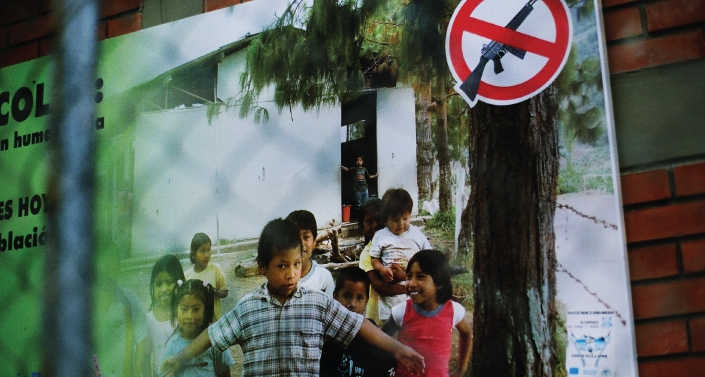GCPEA publishes technical guide on protecting higher education from attack
The Global Coalition to Protect Education from Attack (GCPEA) has launched its Guide to Implementing the Principles of State Responsibility to Protect Higher Education from Attack. The new GCPEA publication aims to support states in protecting higher education by providing technical direction on implementing GCPEA’s Principles Of State Responsibility To Protect Higher Education From Attack.
| Suggested Reading | Conflict Background | GCCT |
The Global Coalition to Protect Education from Attack (GCPEA) has launched its Guide to Implementing the Principles of State Responsibility to Protect Higher Education from Attack. The new GCPEA publication aims to support states in protecting higher education by providing technical direction on implementing GCPEA’s Principles Of State Responsibility To Protect Higher Education From Attack.
At the beginning of 2016, the global higher education community was shocked and saddened by the brutal Taliban attack on Bacha Khan University near Charsadda, Pakistan on January 20. At least 22 people were killed and 20 were injured when gunmen entered the campus and opened fire on students and professors.
Sadly, the Bacha Khan University attack is not unique. In contexts of conflict and insecurity, academics and students are murdered, kidnapped, threatened, detained, and tortured by groups who wish to intimidate, silence, or exert control over teaching, learning, and education content. For similar reasons, institutions of higher education are damaged or destroyed in arson or bombings, and by other methods. Universities have also been used for military purposes, for example as bases, barracks, weapons caches, and detention centers, placing those within them at risk of attack by opposing forces. GCPEA’s Principles make clear that states have a responsibility to ensure that attacks like these do not happen. The Guide to Implementing the Principles explains how states can fulfil this obligation.
“Universities are centers of learning and research that contribute to national growth and progress, but this role also means that they become targeted by armed groups and other actors who are threatened by what they stand for. The Guide affords states concrete steps that can be taken to uphold institutional autonomy and academic freedom, and ensure safe and stable spaces for learning and teaching at the tertiary level.”
– Rob Quinn, Chair of the GCPEA Higher Education Working Group and Director of Scholars at Risk.
Measures outlined in the Guide to Implementing the Principles of State Responsibility to Protect Higher Education from Attack include:
- Immediate and full investigation of all attacks, with appropriate prosecution and sentencing of perpetrators;
- Safety assessment and risk analysis mechanisms;
- Increased coordination between educational institutions and the National Security directorate, Ministry of Defense, and others;
- Assistance for victims of attacks, including by providing psychosocial and medical support;
- Secure housing, transport, and infrastructure; and
- Prevention of the use of higher education facilities for military purposes during armed conflict, to avoid turning the university into a target for attack by opposing forces, including by following the Guidelines for Protecting Schools and Universities from Military Use during Armed Conflict and endorsing the Safe Schools Declaration.
The Guide to Implementing the Principles of State Responsibility to Protect Higher Education from Attack will be launched today at UNESCO in Paris. The event, hosted by the Permanent Mission of Norway to UNESCO and sponsored by PEIC, will bring together state representatives and higher education stakeholders. In addition to launching the Guide, the panel will include a presentation by a scholar who was forced to leave Syria due to his academic work.
“Attacks on higher education have a cascading effect on all levels of the education system. The launch of this document is a milestone towards protecting the valuable institutions where teachers are trained, new pedagogy is developed, and other social progress is made.”
– Amy Kapit, interim Director of GCPEA
On April 26, 2016, nineteen months after 43 students from the Raul Isidro Burgos Teacher’s Training College in Ayotzinapa, Mexico, disappeared in an incident that allegedly involved both state forces and non-state armed groups, relatives protest the government’s failure to adequately investigate the case. The Inter-American Commission on Human Rights, as well as local and international human rights organizations, have also called for the case to be appropriately addressed through investigation, prosecution, and sentencing of those responsible.
The Global Coalition to Protect Education from Attack (GCPEA) is a unique coalition of international organizations including CARA (Council for Assisting Refugee Academics), Human Rights Watch, the Institute of International Education’s Scholar Rescue Fund, Protect Education in Insecurity and Conflict, Save the Children International, the Scholars at Risk Network, UNHCR, and UNICEF.
TransConflict is an affiliated organization of the Global Coalition to Protect Education from Attack.



















